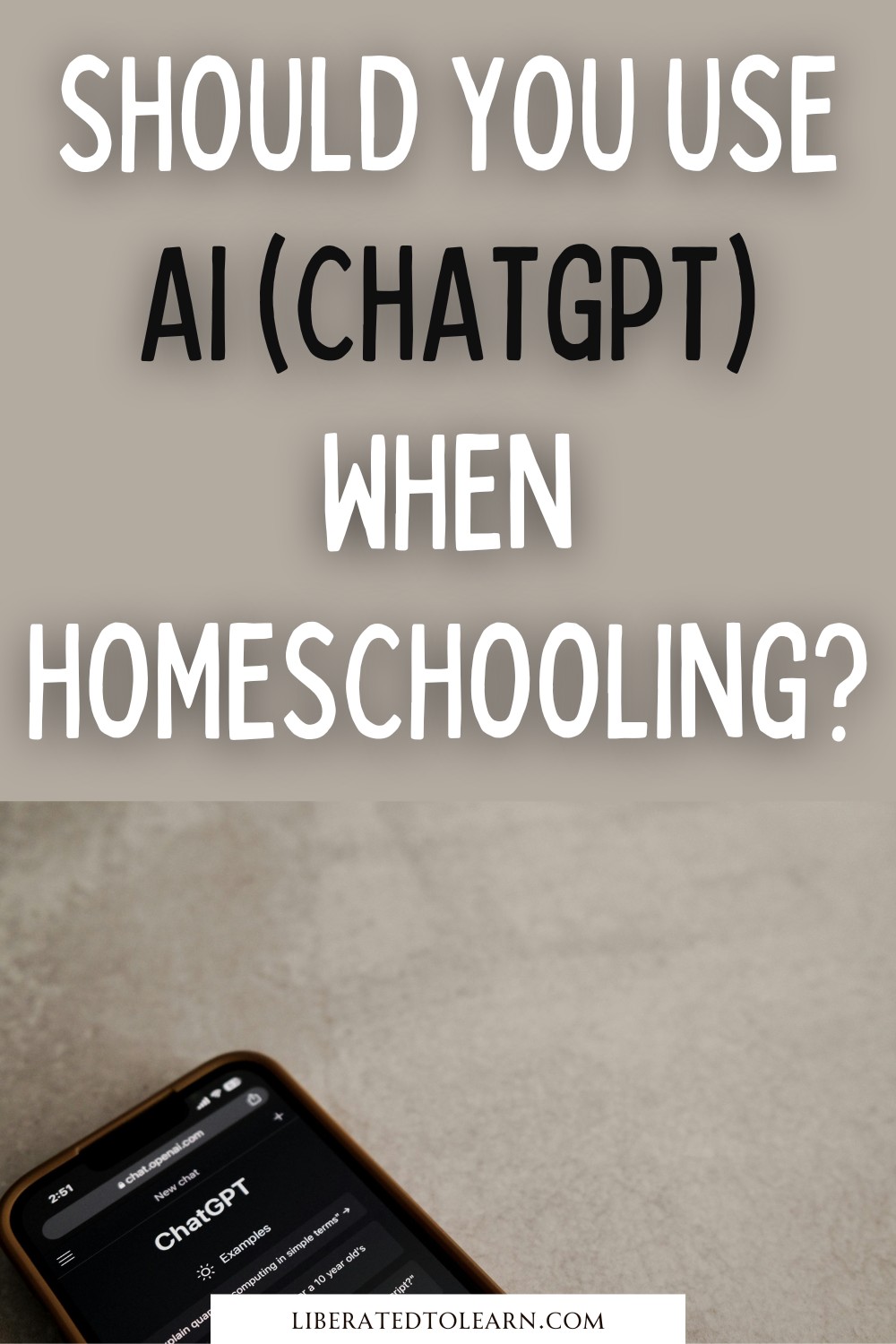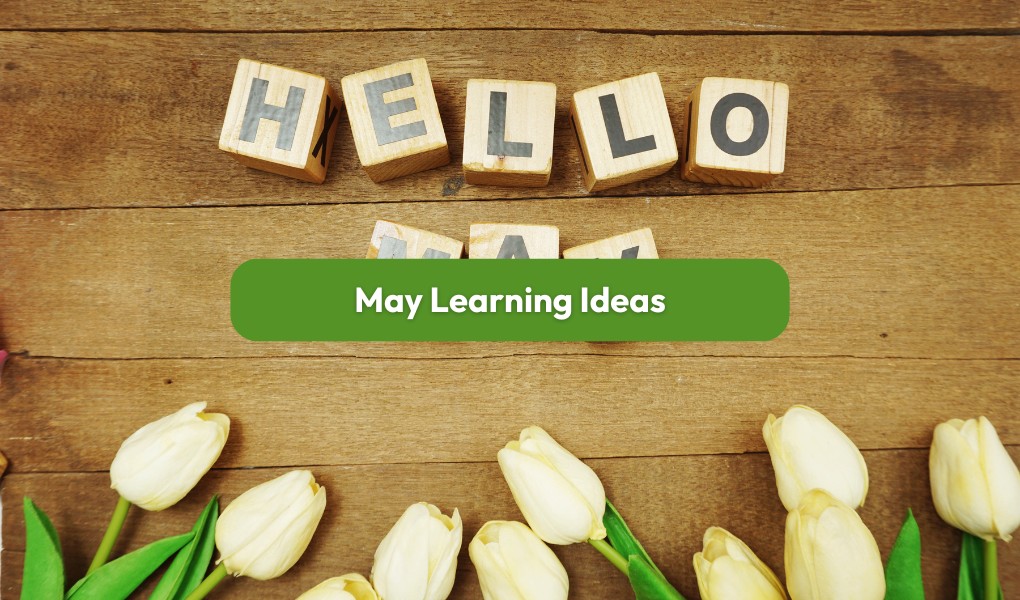With tools that can write essays, generate art, solve maths problems, and create lesson plans, is using AI in homeschooling really a good or bad thing?

Is artificial intelligence the secret homeschool assistant you’ve been waiting for? Or a digital distraction in disguise?
Unless you’ve been completely off-grid (which I often envy), you’re probably well aware of how much AI has swept in and changed our lives. It almost feels like it appeared overnight. One day, I didn’t know it existed, and the next—it was everywhere.
But what does AI mean for the world of home education? We’re now dealing with tech that can “think” and create like a human. And with tools that can write essays, generate art, solve maths problems, and create lesson plans, the burning question is: is AI helping our kids learn . . . or doing the learning for them? And is using AI in homeschooling really a good or bad thing?

What Are AI Tools?
ChatGPT, Canva Magic Write, Grammarly—they’re all tools that use artificial intelligence to generate content and do tasks that simulate human thinking, like writing and solving problems.
And they definitely come in handy when you’re in need of fresh ideas. For homeschooling, AI can be extremely helpful in creating lesson plans, giving you topic ideas, and even telling you about something you don’t know. It’s like having your own teaching assistant.
But are we becoming too reliant on AI? And is it making us lazy rather than capable of thinking for ourselves?
What I worry about is my children becoming too dependent on AI and it being such a norm that natural ways of learning and innate curiosity are lost. But I also think it’s a useful tool, especially for busy families as it can save people a lot of time, reduce their workload, and alleviate stress.
To really understand the depths of AI and whether you’d want to use it when homeschooling, let’s look at the pros and cons. That way, you can decide for yourself whether it will be worth it or not—a friend or foe, a blessing or a risk.
Reasons For Using AI When Homeschooling
Let’s start with the pros—because there are some very real benefits to inviting AI into your homeschool day.
It’s a time saver!
There’s no denying that homeschooling is basically a full-time job, and it’s a lot of work at times. But with AI, you can generate whatever you need within seconds, saving time that you would have otherwise spent thinking and planning.
Need a whole week of learning ideas? Or resources for a topic that your child is really interested in? You can simply type in any question or request into ChatGPT and it will give it to you instantly.
It’s like your very own personal tutor
AI will never be able to replace the human connection you offer, but it has its benefits of always being there when you need it most.
As a parent, you may not always have the energy or expertise in certain areas to help your child and that’s where AI can step in to fill the gaps. Whether it’s trying to understand something confusing or brainstorming ideas, AI is your official helper—and a great backup if you’re struggling too.
You can get more creative
We all know what it’s like to struggle for ideas, because, if you’re anything like me, trying to be creative and come up with new things to try (especially for homeschooling) isn’t always easy.
Well, AI can offer you all the inspiration you need. Because even if you’re not a very creative person yourself, AI is there to help fuel your child’s creativity with new ideas, at any time.
It can help you customise your child’s learning
Your child will no doubt have their own preferred way of learning, and the great thing about AI is that it can tailor to your child’s needs and pace. So, if your child has strengths that you want to focus on but you’re unsure of where to start, AI can help you.
You’ll never run out of ideas
AI is a never-ending idea machine. It can generate as many ideas as you like in just seconds and all you need are a few simple prompts. Anything you can think of, AI can offer because it pulls information from everywhere. And it will even suggest things that you might never have thought of on your own.
It saves you money
If you’re not keeping track, the cost of homeschooling can quickly add up. Whilst many things can be done on a budget, things like tutors and curriculums do have costs attached to them. But with AI, you can get the very same for free or very little.
And because AI can generate things like worksheets, quizzes, project ideas, and even full unit studies on demand, you’re not stuck constantly buying new materials to keep your homeschool fresh and exciting. Any money saved is always a win!
It’s always available
One of the best things about using AI in homeschooling is that it’s always there when you need it. There’s no need to schedule tutoring sessions weeks in advance, no waiting for office hours, and no worrying if it’s too early, too late, or even a holiday. AI is ready whenever you and your child need it.
This flexibility is a total lifesaver, especially for families who homeschool outside of traditional hours or who like to follow a more relaxed, child-led rhythm. Maybe you’re travelling. Maybe you’ve had a crazy day and finally get around to learning after dinner.
Whatever your homeschool style looks like, AI fits into your schedule—not the other way around.
Reasons Against Using AI When Homeschooling
It’s not always accurate
You might think that you’re getting the right information all the time, but—trust me—AI can get it wrong and you’d be none the wiser unless you double checked for yourself.
So, don’t always assume that the facts you’re getting are accurate. It’s worth doing your own research to be sure.
You can become easily reliant on it
Sure it might save you a lot of time and effort by using AI, but it’s something that you can easily become reliant on.
Not only does it take away natural creativity, but it also limits your ability to think for yourself and solve problems through genuine hard work.
It can lead to a lot of screen time
With AI being a digital tool, your homeschool days could easily become screen-heavy without you even realising. And more screen time means you could lose out on more hands-on, nature-rich learning.
It’s easier to cheat
Instead of seeking answers for themselves, your children might simply rely on AI to do all the work for them. It makes it so much easier to cheat or get information quickly without putting much (if any) effort in.
It can’t replace human thinking and creativity
No matter how much it learns, AI will never be able to replace the human brain and how it thinks and creates. It might be able to spit out a five-paragraph essay or suggest a list of topic ideas in seconds, but it can’t dream up new ideas that have never been seen before. It can’t experience wonder and wrestle with deep questions in the same way that a curious child or adult can. And we risk losing this if we rely on AI too much.
Because at the end of the day, robots can do a lot, but they’ll never replace a child’s imagination, creativity, and beautiful human mind.
Questions to Ask Yourself Before Using AI in Homeschooling
- Will the AI tool enhance real learning or replace it?
- Can I model responsible AI usage for my kids?
- How much time will we spend using AI?
- What do we plan to use AI for, and how will we use it?
- How will I balance AI with hands-on activities and outdoor learning?
- Will using AI tools align with our family values?
Tips for Homeschooling With AI
Use it to help, not lead
AI should never take over how you teach or how your child learns. It should aid, for sure, but never replace. Use it to help with ideas, but always encourage your own thinking—and for your children to think for themselves too.
Set healthy boundaries
Setting boundaries will prevent you and your kids from becoming too reliant on AI. Decide what you’re going to use it for and when, and make sure to balance using it with hands-on activities and outdoor adventures.
Talk to your kids about AI
Talking about AI and how to use it will help your kids to understand what it is and what it should be used for. The more knowledge they have (including the cons of AI), the better their decisions will be when it comes to using it.
Always balance AI with other methods of learning
Because AI is tech-heavy, it’s important to step away from it and try out other methods of learning—ones which are more hands-on, but also less overstimulating. That will probably mean having absolute screen-free days and no ChatGPT prompts at all—as tempting as it may be!
Model how to use it
The most important thing of all is modelling how to use AI properly. After all, our kids follow our example more than we realise. And when they see how and when we use AI, they’ll be sure to pick up our habits (which are hopefully good ones!)
Final Thoughts on AI
AI tools in homeschooling aren’t going away—and that’s not necessarily a bad thing. The truth is AI can be used for good, and I’m not going to deny how useful it’s been for me.
The goal isn’t to avoid the tech, but to use it with purpose and wisdom. It won’t ever know your child’s heart, struggles, or their spark the way you do. But it can help lighten the load and make learning more engaging when used wisely. When done so, AI can become a valuable assistant and not a replacement for real learning or real connection.
Just remember, you are still the most powerful “tool” when it comes to homeschooling your children. No app can replace your intuition, creativity, or love.
So, love it or hate it, AI looks like it’s here to stay. The question is, how will you use it?
If you’re already using AI for homeschooling, let us know your experience with it in the comments!

m@liberated
Want more from Liberated to Learn?
Subscribe to stay updated about new posts, resources and giveaways!











